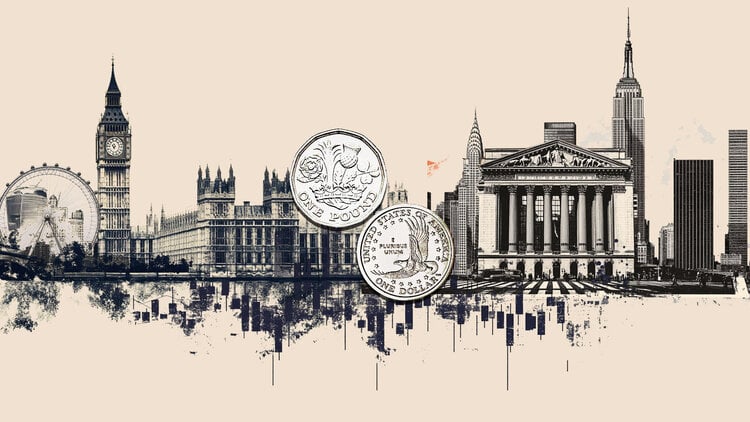- The USD/MXN consolidates around the 20.00 zone.
- The US Dollar hits new three-month highs at 104.63.
- US JOLTS job postings fall below expectations as CB consumer confidence hits its best level since 2021.
The USD/MXN has moved this Tuesday at levels very close to the maximum zone touched yesterday and on October 23 at 20.09. The pair has consolidated today around the 20.00 zone, touching a daily high of 20.07 and a low of 19.61. After the opening of Wall Street, the Dollar has given some ground against the Mexican Peso, currently losing 0.34% at 19.98.
The US dollar continues its advance ahead of US employment data.
The Dollar Index (DXY) rose this Tuesday to 104.63, its highest level since July 30. Geopolitical tensions in the Middle East favor the greenback as a safe haven, while polls on the US presidential elections continue to maintain a tight 49% – 48% between Kamala Harris and Donald Trump. For now, the Democratic candidate discreetly leads the polls in the states of Wisconsin and Michigan, while Trump does so in Georgia and Arizona. The two are practically tied in North Carolina, Nevada and Pennsylvania.
On the data front, today the JOLTS job offers for Septemberwhich have moderated to 7.44 million from 7.86 in August. The figure has been below expectations to rise to 7.99 million. On the other hand, the Conference Board consumer confidence has soared to 108.7 points in October from 99.2 in September, its best figure since March 2021.
The focus turns to employment data from Mexico and the US.
USD/MXN traders await the next relevant data for Mexico and the United States, which could generate volatility in the pair ahead of next week’s big events, the US elections and the Fed meeting.
Tomorrow, Thursday, highlights include Mexico’s preliminary third-quarter GDP, which will be published at 12:00 GMT, and the US ADP private employment report for October, which is expected to have generated 115,000 jobs compared to 143,000 the previous month.
On Friday comes the turn of Mexico’s unemployment rate for the month of September and the US Non-Farm Payrolls for October, which could show a figure of 123,000, well below the 254,000 of the previous month.
USD/MXN Price Levels
The cross maintains its bullish trend in the medium and long term, although the Relative Strength Index (RSI) has fallen below 50 on the one-hour chart, pointing to the continuation of the decline in the short term. Initial support awaits at 19.92, where the 100 moving average passes on the one-hour chart. Further down, last week’s low awaits at 19.75.
On the upside, a surpassing of yesterday’s maximum at 20.09 could lead the USD/MXN to test the strong resistance located at 20.15, the 2024 ceiling reached last September.
The US Dollar FAQs
The United States Dollar (USD) is the official currency of the United States of America, and the “de facto” currency of a significant number of other countries where it is in circulation alongside local banknotes. According to 2022 data, it is the most traded currency in the world, with more than 88% of all global currency exchange operations, equivalent to an average of $6.6 trillion in daily transactions. After World War II, the USD took over from the pound sterling as the world’s reserve currency.
The single most important factor influencing the value of the US Dollar is monetary policy, which is determined by the Federal Reserve (Fed). The Fed has two mandates: achieve price stability (control inflation) and promote full employment. Your main tool to achieve these two objectives is to adjust interest rates. When prices rise too quickly and inflation exceeds the 2% target set by the Fed, the Fed raises rates, which favors the price of the dollar. When Inflation falls below 2% or the unemployment rate is too high, the Fed can lower interest rates, which weighs on the Dollar.
In extreme situations, the Federal Reserve can also print more dollars and enact quantitative easing (QE). QE is the process by which the Fed substantially increases the flow of credit into a clogged financial system. This is an unconventional policy measure used when credit has dried up because banks do not lend to each other (for fear of counterparty default). It is a last resort when a simple lowering of interest rates is unlikely to achieve the necessary result. It was the Fed’s weapon of choice to combat the credit crunch that occurred during the Great Financial Crisis of 2008. It involves the Fed printing more dollars and using them to buy US government bonds, primarily from financial institutions. QE usually leads to a weakening of the US Dollar.
Quantitative tightening (QT) is the reverse process by which the Federal Reserve stops purchasing bonds from financial institutions and does not reinvest the principal of maturing portfolio securities in new purchases. It is usually positive for the US dollar.
Source: Fx Street
I am Joshua Winder, a senior-level journalist and editor at World Stock Market. I specialize in covering news related to the stock market and economic trends. With more than 8 years of experience in this field, I have become an expert in financial reporting.



%20Luca%20Delpia%20-%20Archivio%20della%20Fondazione%20I%20Teatri%20Reggio%20Emilia%201071%20b%20(002).jpg)



